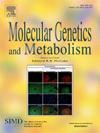Antioxidant therapy in inborn metabolic diseases
IF 3.5
2区 生物学
Q2 ENDOCRINOLOGY & METABOLISM
引用次数: 0
Abstract
Oxidative stress contributes to the pathophysiology of several inherited metabolic diseases (IMDs). The quality and extent of clinical evidence for the use of antioxidant therapies in IMDs have yet to be ascertained. Despite frequent clinical use, robust evidence from large-scale trials is limited. The strongest support comes from studies on idebenone in Leber's hereditary optic neuropathy, showing improvements in visual outcomes. For other antioxidants and conditions, evidence is mixed or constrained by small sample sizes and short trial durations. Coenzyme Q10 in mitochondrial diseases, vitamin E in lipid disorders, and N-acetylcysteine in various IMDs have shown some promise, but evidence is heterogeneous. Challenges include optimizing dosing, dissecting oxidative stress mechanisms across disorders, and overcoming pharmacokinetic limitations. High-grade evidence exists for the clinical efficacy of N-acetyl-L-leucine for both Niemann Pick type C disease and other lysosomal storage diseases, though its potential antioxidant effect is indirect. This review highlights the need for larger trials with standardized, clinically relevant outcomes. Future research should explore oxidative stress mechanisms, targeted therapies, and combination approaches. While antioxidants hold potential, evidence remains limited, warranting cautious use and further investigation to define their role in these rare but cumulatively impactful disorders.
Synopsis
This review finds limited robust evidence for antioxidant therapies in inherited metabolic diseases, highlighting the need for larger trials and more targeted approaches.
先天性代谢疾病的抗氧化治疗
氧化应激有助于几种遗传性代谢疾病(IMDs)的病理生理。抗氧化剂治疗imd的临床证据的质量和程度还有待确定。尽管临床使用频繁,但来自大规模试验的有力证据有限。最有力的支持来自于对伊地苯酮治疗莱伯氏遗传性视神经病变的研究,它显示了视力结果的改善。对于其他抗氧化剂和条件,证据是混合的或受限于小样本量和短试验持续时间。辅酶Q10在线粒体疾病中,维生素E在脂质紊乱中,n -乙酰半胱氨酸在各种imd中显示出一些希望,但证据是不一致的。挑战包括优化剂量,解剖跨疾病的氧化应激机制,以及克服药代动力学限制。尽管n -乙酰-l -亮氨酸的潜在抗氧化作用是间接的,但它对Niemann Pick C型病和其他溶酶体积存病的临床疗效有高度的证据。这篇综述强调需要更大规模的标准化临床相关结果的试验。未来的研究应探索氧化应激机制、靶向治疗和联合治疗方法。虽然抗氧化剂具有潜力,但证据仍然有限,需要谨慎使用和进一步调查,以确定它们在这些罕见但累积影响的疾病中的作用。本综述发现抗氧化治疗遗传性代谢疾病的有力证据有限,强调需要进行更大规模的试验和更有针对性的方法。
本文章由计算机程序翻译,如有差异,请以英文原文为准。
求助全文
约1分钟内获得全文
求助全文
来源期刊

Molecular genetics and metabolism
生物-生化与分子生物学
CiteScore
5.90
自引率
7.90%
发文量
621
审稿时长
34 days
期刊介绍:
Molecular Genetics and Metabolism contributes to the understanding of the metabolic and molecular basis of disease. This peer reviewed journal publishes articles describing investigations that use the tools of biochemical genetics and molecular genetics for studies of normal and disease states in humans and animal models.
 求助内容:
求助内容: 应助结果提醒方式:
应助结果提醒方式:


